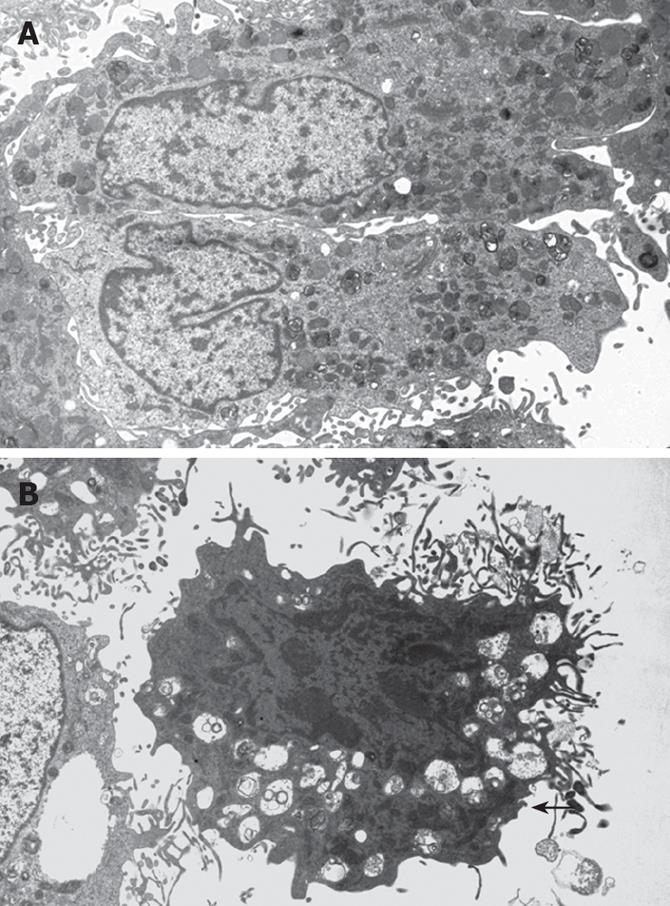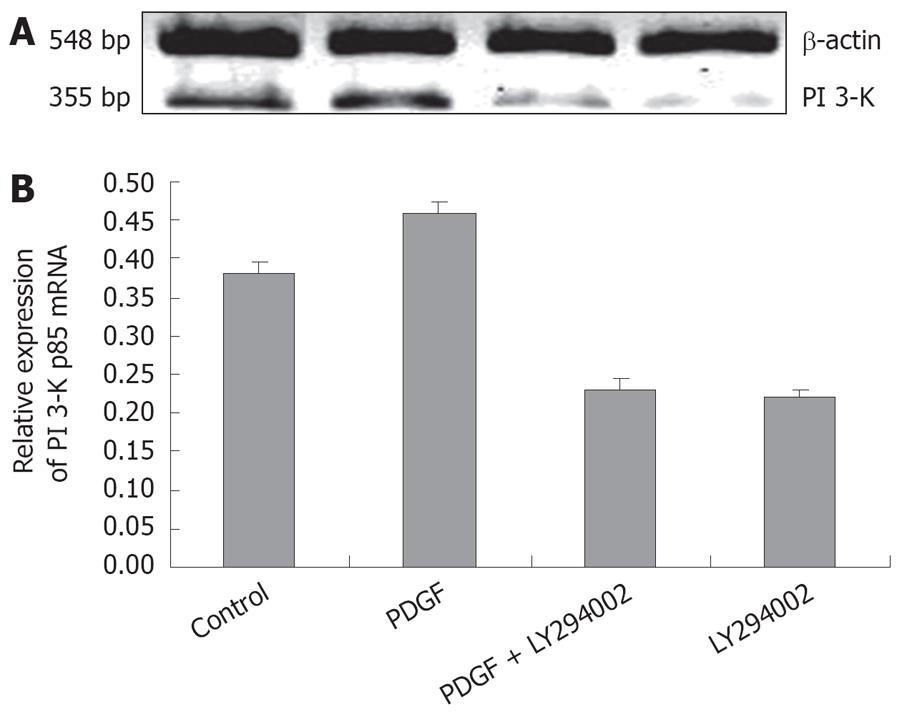Copyright
©2008 The WJG Press and Baishideng.
World J Gastroenterol. Sep 7, 2008; 14(33): 5186-5191
Published online Sep 7, 2008. doi: 10.3748/wjg.14.5186
Published online Sep 7, 2008. doi: 10.3748/wjg.14.5186
Figure 1 Transmission electron micrography of cultured HSC.
A: Control HSC showing nuclear is intact and the mitochondria is smooth; B: LY 294002 treated HSC: Chromatins condensed, shrunk and aggregated along inside the nuclear membrane. The arrows points at the apoptotic bodies (× 5000).
Figure 2 Immunocytochemistry (× 400).
A: In negative control, the primary antibody was omitted; B and E: PI 3-K p85 and p-Akt473 staining in the PDGF-BB group; C and F: PI 3-K p85 and p-Akt473 expression in the PDGF-BB and LY 294002 groups; D and G: PI 3-K p85 and p-Akt473 staining in the LY 294002 group. Rabbit anti-PI 3-K p85α polyclonal antibody (1:50) and rabbit anti-phospho-Ser473 Akt polyclonal antibody (1:100) used as primary antibodies.
Figure 3 Representative Western blot analysis of PI 3-K protein expression in HSC with β-actin as internal control.
From left, 1st lane, control HSC; 2nd lane, PDGF stimulated HSC; 3rd lane, PDGF + LY 294002 group and 4th lane, LY 294002 treated HSC.
Figure 4 Representative RT-PCR photography of PI 3-K mRNA transcription from rat HSC, β-actin as internal control.
A: From left, 1st lane, control HSC; 2nd lane, PDGF stimulated HSC; 3rd lane, PDGF + LY 294002 group and 4th lane, LY 294002 treated HSC. B: A graphic analysis of the RNase protection assay.
Figure 5 Representative Western blot analysis of p-Akt and total Akt protein expressions in HSC, β-actin as internal control.
From left, 1st lane, control HSC; 2nd lane, PDGF stimulated HSC; 3rd lane, PDGF + LY 294002 group and 4th lane, LY 294002 treated HSC.
- Citation: Wang Y, Jiang XY, Liu L, Jiang HQ. Phosphatidylinositol 3-kinase/Akt pathway regulates hepatic stellate cell apoptosis. World J Gastroenterol 2008; 14(33): 5186-5191
- URL: https://www.wjgnet.com/1007-9327/full/v14/i33/5186.htm
- DOI: https://dx.doi.org/10.3748/wjg.14.5186













